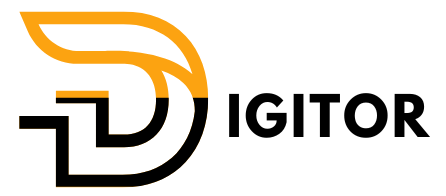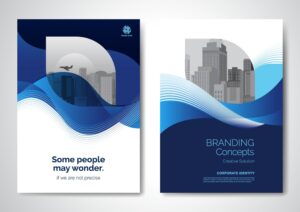The Revival of Print Design in a Digital World
Introduction
In an era dominated by digital media, print design might seem like a relic of the past. However, print design is experiencing a revival as businesses and designers recognize its unique benefits and enduring impact. From tactile experiences to standout marketing materials, print design continues to play a vital role in today’s digital landscape. This blog explores the revival of print design, its benefits, and how it complements digital strategies.
Why Print Design is Making a Comeback
The Tangibility Factor
One of the main reasons print design is making a comeback is its tangible nature. Unlike digital content, which is ephemeral and often overlooked, print materials offer a physical presence that can be held, touched, and experienced. This tactile quality makes print design memorable and impactful, providing a sensory experience that digital media cannot replicate.
Standing Out in a Digital-Heavy World
With the overwhelming amount of digital content consumers encounter daily, print design provides a refreshing break. High-quality print materials, such as brochures, business cards, and posters, can stand out amidst the digital noise, catching attention and leaving a lasting impression. Print design’s visual and tactile appeal can effectively capture and hold audience interest.
Benefits of Print Design in a Digital Age
1. Enhanced Brand Perception
Print design can enhance brand perception by conveying professionalism and attention to detail. High-quality print materials, such as well-designed business cards or elegant brochures, contribute to a brand’s image and credibility. This tangible representation of your brand helps build trust and fosters a positive impression.
2. Better Engagement and Retention
Studies have shown that people tend to retain information better from print materials than from digital sources. The physical nature of print design encourages more focused and deliberate consumption. Print materials often become valuable references or keepsakes, leading to improved engagement and retention of information.
3. Versatility and Customization
Print design offers a wide range of customization options that can be tailored to specific needs. From choosing paper types and finishes to incorporating unique design elements, print materials can be customized to reflect your brand’s personality and message. This versatility allows for creative expression and differentiation.
4. Targeted Marketing Opportunities
Print design allows for targeted marketing efforts that can reach specific audiences effectively. Direct mail campaigns, personalized brochures, and event materials can be strategically designed and distributed to engage targeted demographics. This targeted approach enhances the relevance and impact of marketing efforts.

Integrating Print Design with Digital Strategies
1. Omnichannel Marketing
Integrating print design with digital strategies creates a cohesive omnichannel marketing approach. Combining print materials with digital elements, such as QR codes or augmented reality, enhances user experience and bridges the gap between physical and digital interactions. This synergy ensures a seamless and engaging brand experience.
2. Complementary Branding
Print design complements digital branding by reinforcing visual identity across various platforms. Consistent use of logos, colors, and typography in both print and digital materials strengthens brand recognition and creates a unified brand presence. This consistency helps maintain brand coherence and fosters trust.
3. Enhancing User Experience
Incorporating print design into user experiences, such as event programs or product packaging, adds a tactile dimension that enhances overall engagement. Print materials can serve as valuable touchpoints that complement digital interactions, providing a richer and more immersive experience for users.
Examples of Successful Print Design Revival
1. Innovative Packaging
Packaging design has seen a revival with creative and distinctive print designs that stand out on shelves. Brands are using high-quality materials, unique finishes, and bold graphics to create memorable packaging experiences that drive consumer interest and loyalty.
2. Impactful Direct Mail Campaigns
Direct mail campaigns have become more sophisticated with personalized and well-designed print materials. Creative formats, eye-catching designs, and targeted messaging make direct mail an effective tool for engaging audiences and driving action.
3. Elegant Business Collateral
Business cards, brochures, and other collateral materials have evolved to reflect a brand’s sophistication and professionalism. High-quality print designs with attention to detail make these materials valuable tools for networking and building business relationships.
Conclusion
Despite the digital age’s dominance, print design is experiencing a revival due to its unique benefits and enduring appeal. By enhancing brand perception, improving engagement, and offering versatile marketing opportunities, print design remains a valuable asset in a comprehensive marketing strategy. Integrating print with digital efforts creates a powerful combination that captures attention and drives results. Ready to explore the revival of print design for your brand? Contact us to get started on your next print project.
For more insights into print design and its role in modern marketing, visit Print Magazine for industry trends and inspiration, or check out Creative Review for design news and features.
Explore more related articles to deepen your understanding and make informed choices about graphic design techniques
Why Custom Website Development is Essential for Your Brand
How to Choose the Best Graphic Design Services for Your Business







